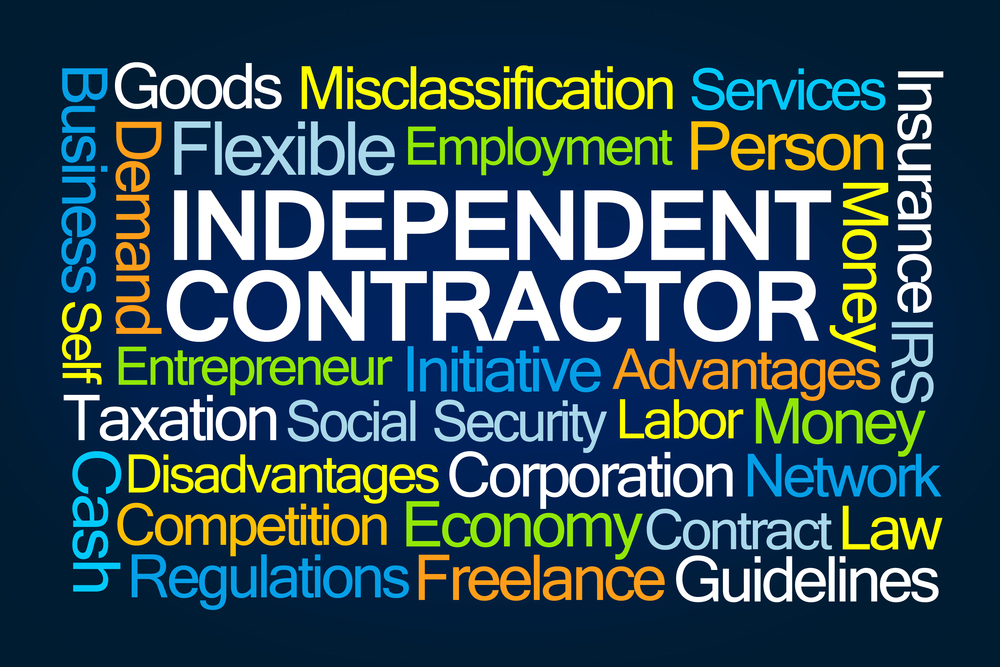A new proposed rule from the U.S. Department of Labor (DOL) would make it easier for employers to justify classifying certain workers as independent contractors, but misclassifying workers would still be a costly mistake.

The rise of the gig economy has put the issue of employee versus independent contractor in the spotlight in recent years, but even before companies such as Uber, Lyft, DoorDash, and others began basing their business models on the use of contractors, employers struggled to determine whether workers could legally be classified as independent contractors.
The proposed rule is seen as making it easier to classify a worker as a contractor instead of an employee, but caution is still advised.
“Employers that want to use independent contractors should be careful,” Philip R. Bruce, an attorney with McAfee & Taft in Oklahoma City, says. “Even if the proposed rule is finalized, the proper classification of workers is still a fact-intensive analysis. Employers can’t use a ‘one-size-fits-all approach,’” Bruce says.
The use of independent contractors can be less expensive than relying employees, since businesses don’t pay employment taxes on contractors, and contractors aren’t entitled to the various benefits employers provide to their employees. Also, contractors aren’t entitled to workers’ compensation or unemployment insurance, and they are exempt from the minimum wage and overtime law, as well as antidiscrimination laws.
Workers found to be misclassified as contractors, however, pose major risks, since the employer can be liable for wage and hour violations, workers’ comp, unemployment insurance, and noncompliance with other employment-related laws if a worker turns out to be an employee under various federal, state, and local statutes.
Contents of New Proposed Rule
The new rule adopts an “economic reality” test to determine if a worker can be classified as an independent contractor under federal employment laws, including the Fair Labor Standards Act (FLSA), which guarantees employees are paid at least the federal minimum wage and time and one-half pay for overtime. The proposed rule looks at whether workers are in business for themselves or if they are economically dependent on the business paying them for their work.
The proposed rule’s “core factors” examine the nature and degree of the worker’s control over the work and the worker’s opportunity for profit or loss. The more control workers have, the more likely they are to be legally classified as contractors.
The proposed rule also looks at three other factors: the amount of skill required for the work, the degree of permanence of the working relationship between the worker and the potential employer, and whether the work is part of an integrated unit of production.
The proposed rule also notes that actual practice is more relevant than any contractual or theoretical aspects of determining whether a worker is an employee or contractor.
“Courts and the DOL have long used the ‘economic realities’ test to determine whether a worker is an independent contractor,” Bruce says. “Different jurisdictions have used different variations of this test.”
Bruce says the proposed rule would impose a universal standard. “It also tweaks the existing standard in several ways,” he says. One of the most significant changes places more importance on the nature and degree of the workers’ control over work and the workers’ opportunity for profit or loss.
The proposed rule would affect all independent contractors—those who work in industries that have traditionally used independent contractors as well as the workers working for app-based companies, such as Uber and Lyft. But it’s the new style gig workers that “have brought the issue to the forefront and are certainly a driving force for the new rule,” Bruce says.
More Clarity
The proposed rule “does offer more certainty and clarity than how different jurisdictions apply the various tests,” Bruce says. “The core factors and DOL guidance is a step in the right direction of giving employers more concrete guidance.” But the proposed rule must be “weighed and analyzed in each unique instance,” he says.
“There is no bright-line test for employers, and creating one would likely do more harm than good,” Bruce says.
The proposed rule was published in the Federal Register on September 25, 2020, and the public will have 30 days to submit comments on the proposed rule. The comment period will end on October 26, 2020. The DOL may revise the proposed rule after reviewing comments before releasing a final version.
Tammy Binford writes and edits news alerts and newsletter articles on labor and employment law topics for BLR web and print publications.
